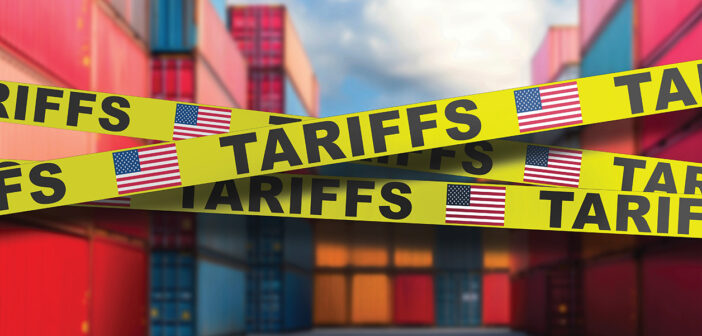With the goal of reducing America’s trade deficit, President Trump increased tariffs to rates not seen since prior to World War II. This was the stated goal behind his April 2nd “Liberation Day” when he announced these tariffs. However, economic theory suggests that tariffs will be ineffective in reducing the trade deficit.
The reason is straightforward: A tariff is a tax on imports. This increases the price of imports, which causes people to buy less of them. Imported goods and services must be paid for using the currency of the country that produced them. Thus, when people reduce their purchases of imports, the demand for foreign currency falls. It is like fewer Americans traveling to Canada; there would be less demand for Canadian currency. When the demand for foreign currency falls, the U.S. dollar strengthens. A stronger dollar reduces the price of imports. As anyone who has traveled to Canada knows, a strong dollar makes the Canadian trip cheaper. Thus, over time, the stronger dollar offsets the impact of tariffs, resulting in no net change in the trade deficit.
If tariffs do not reduce the trade deficit, then what does? Trade deficits are driven by a low domestic savings rate. Domestic savings is defined as saving by the private sector plus saving by the public sector. Positive saving by the public sector is a federal budget surplus while negative saving is a federal budget deficit. The budget deficit currently stands at $1.7 trillion, which is extremely high by historical standards, especially since the economy is not in a recession. Economists call this the “twin deficits,” namely a federal budget deficit drives a trade deficit.
The reason for this might not be clear at first, but it is straightforward. The government must borrow from the rest of the world to cover the budget deficit. The only way it can do so is if foreigners have surplus dollars from selling more goods and services to the United States than what they buy from us.
Tariffs will only do harm to consumers, American manufacturers and the broader economy – with minimal impact on the trade deficit.
This surplus of dollars is thus lent back to the federal government to cover the budget deficit. This results in higher savings abroad, since foreigners are selling more goods and services than they are buying. The U.S. trade deficit is driven by high foreign saving rates offsetting a low domestic saving rate.
Consider the historical record – prior to 1969, balanced budgets were the norm. Deficits then became the norm due to the Vietnam War, Great Society spending programs and the Kennedy-Johnson tax cuts. Trade surpluses were also the norm before 1969 before shifting into a deficit following the federal budget deficit.
This means that reducing the trade deficit requires the federal government get its fiscal house in order, requiring tough choices involving tax increases and cuts to defense and entitlements (since that is where the spending is). Tariffs will only do harm to consumers, American manufacturers and the broader economy – with minimal impact on the trade deficit.















